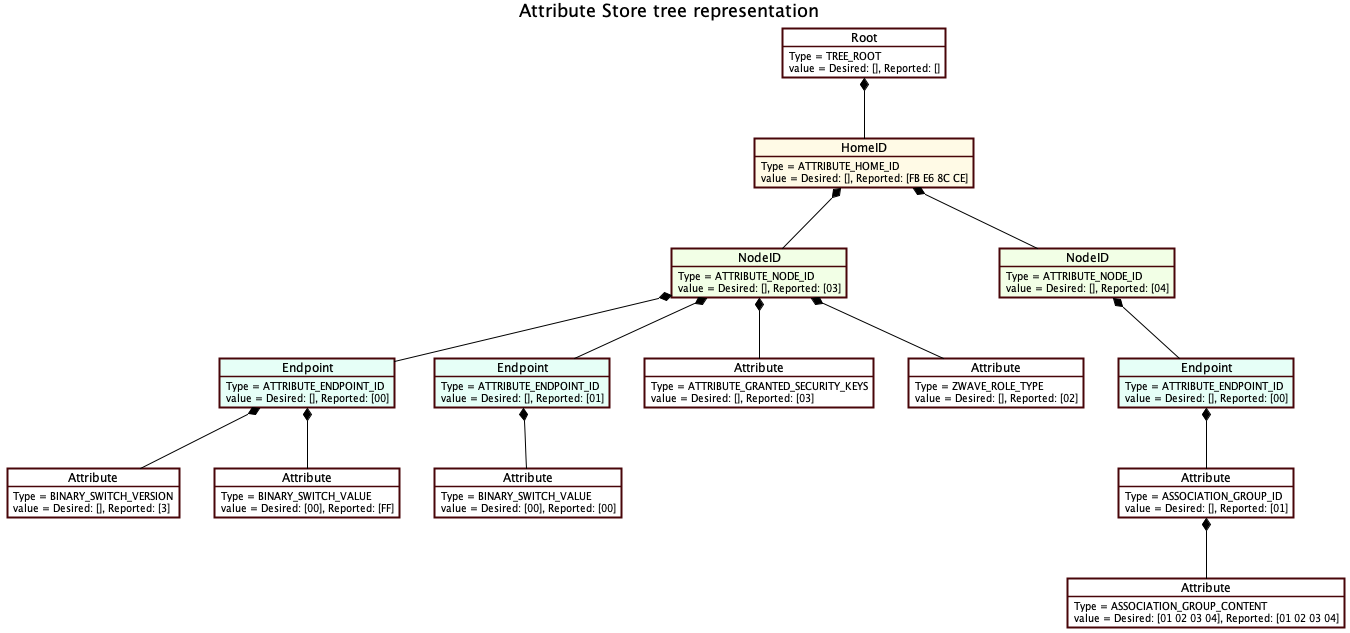Attribute store. More...
Modules | |
| Attribute Store Public Interface | |
| Public functions from the attribute store. It allows other components to manipulate the Attribute Store tree. and register callbacks for Attribute Store updates. | |
| Attribute Store Fixture | |
| Initialization and teardown of the Attribute Store. | |
| Attribute Store Value Helpers | |
| Helper functions to perform actions on the attribute store. | |
| Attribute Store callbacks registration module | |
| Module handling the registration and invokation of callbacks functions for other components. | |
| Attribute Store Node class | |
| Node Class and definition for the attribute store. | |
| Attribute Store Process | |
| Contiki process for the Attribute Store. | |
| Attribute Store validation | |
| Attribute Store validation utility. | |
Files | |
| file | attribute.hpp |
| attribute store C++ wrapper. | |
Detailed Description
Attribute store.
The Attribute store is a tree of attributes stored to save the state of an object in the current network/environment.
The attribute store is a directed acyclic graph, where there is a root node under which all other nodes will have 1 parent and a number of children.
A tree node is identified by an attribute_store_node_t handle Each node has a type, defined by its attribute_store_type_t type.
This indicates what the value represents. There are no restrictions regarding which node (type) is a parent or a child.
Each node has one or more value states, defined by attribute_store_node_value_state_t. Each value state (REPORTED/DESIRED) contains a value of variable length that can be read and written. Nodes created have, by default, unassigned values in each of their value state. In this case, the value length is set to 0.
Finally, an example of attribute store tree organization is shown in the image below. Some Attribute IDs are color-coded for readability and they do not represent any difference between nodes apart from their attribute type value.
